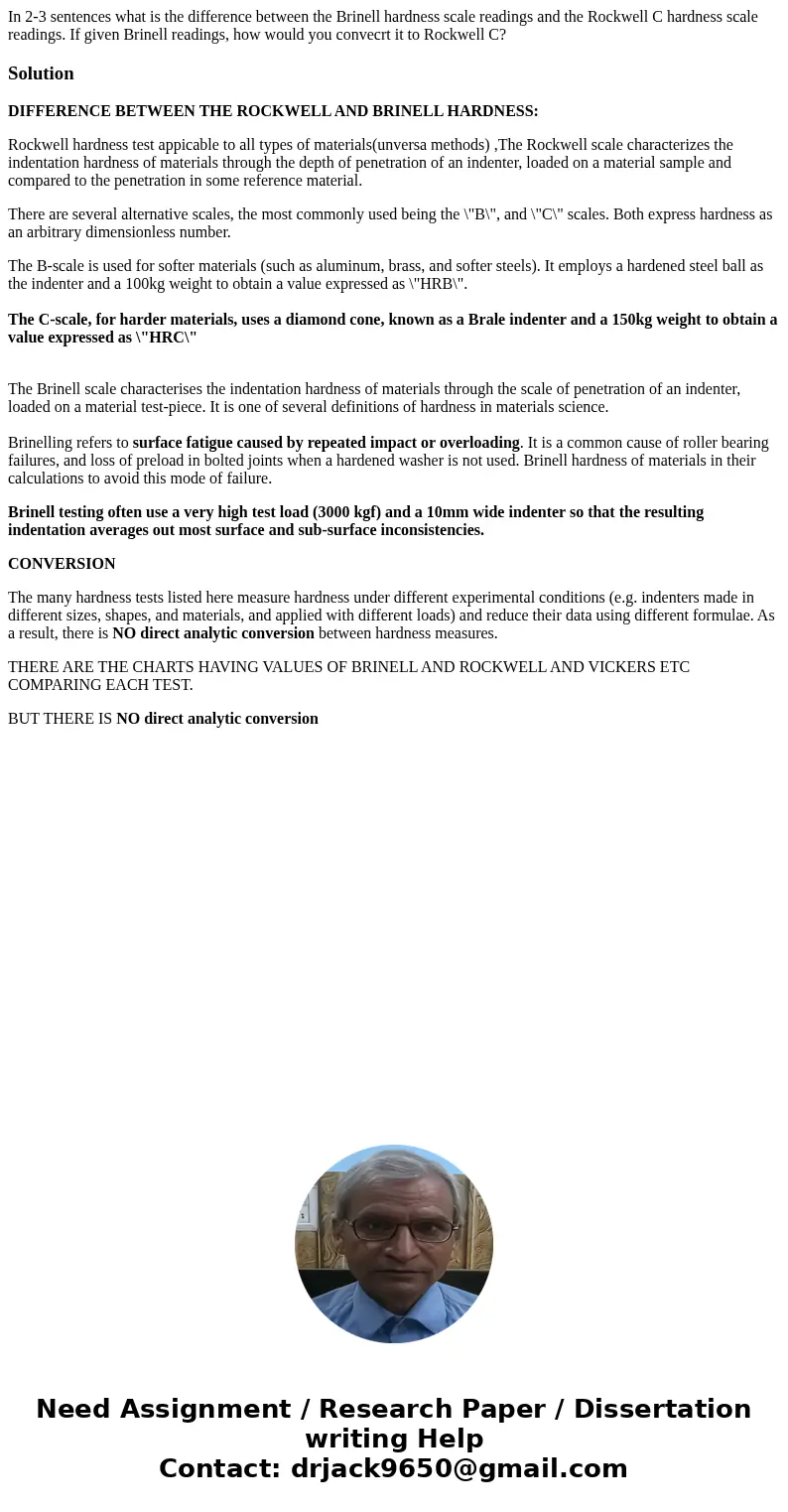In 23 sentences what is the difference between the Brinell h
Solution
DIFFERENCE BETWEEN THE ROCKWELL AND BRINELL HARDNESS:
Rockwell hardness test appicable to all types of materials(unversa methods) ,The Rockwell scale characterizes the indentation hardness of materials through the depth of penetration of an indenter, loaded on a material sample and compared to the penetration in some reference material.
There are several alternative scales, the most commonly used being the \"B\", and \"C\" scales. Both express hardness as an arbitrary dimensionless number.
The B-scale is used for softer materials (such as aluminum, brass, and softer steels). It employs a hardened steel ball as the indenter and a 100kg weight to obtain a value expressed as \"HRB\".
The C-scale, for harder materials, uses a diamond cone, known as a Brale indenter and a 150kg weight to obtain a value expressed as \"HRC\"
The Brinell scale characterises the indentation hardness of materials through the scale of penetration of an indenter, loaded on a material test-piece. It is one of several definitions of hardness in materials science.
Brinelling refers to surface fatigue caused by repeated impact or overloading. It is a common cause of roller bearing failures, and loss of preload in bolted joints when a hardened washer is not used. Brinell hardness of materials in their calculations to avoid this mode of failure.
Brinell testing often use a very high test load (3000 kgf) and a 10mm wide indenter so that the resulting indentation averages out most surface and sub-surface inconsistencies.
CONVERSION
The many hardness tests listed here measure hardness under different experimental conditions (e.g. indenters made in different sizes, shapes, and materials, and applied with different loads) and reduce their data using different formulae. As a result, there is NO direct analytic conversion between hardness measures.
THERE ARE THE CHARTS HAVING VALUES OF BRINELL AND ROCKWELL AND VICKERS ETC COMPARING EACH TEST.
BUT THERE IS NO direct analytic conversion

 Homework Sourse
Homework Sourse